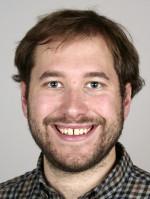Minimal climate impacts from short-lived climate forcers following emission reductions related to the COVID-19 pandemic
J Weber, Y Shin, J Staunton Sykes, S Archer Nicholls, N Abraham, A Archibald
– Geophysical Research Letters
(2020)
47,
CRI-HOM: A novel chemical mechanism for simulating Highly Oxygenated Organic Molecules (HOMs) in global chemistry-aerosol-climate models
J Weber, S Archer-Nicholls, P Griffiths, T Berndt, M Jenkin, H Gordon, C Knote, AT Archibald
– Atmospheric Chemistry and Physics
(2020)
20,
Minimal climate impacts from short-lived climate forcers following emission reductions related to the COVID-19 pandemic.
J Weber, YM Shin, J Staunton Sykes, S Archer-Nicholls, NL Abraham, AT Archibald
(2020)
Linking Peroxy Radical Chemistry to Global Climate: The Common Representatives Intermediates Chemical Mechanism in the UK Earth System Model
S Archer-Nicholls, JM Weber, NL Abraham, MR Russo, C Knote, PT Griffiths, D Lowe, S Utembe, F O'Connor, O Wild, T Berndt, ME Jenkin, AT Archibald
(2020)
Description and evaluation of the UKCA stratosphere-troposphere chemistry scheme (StratTrop vn 1.0) implemented in UKESM1
A T Archibald, F M O'Connor, N Luke Abraham, S Archer-Nicholls, M P Chipperfield, M Dalvi, G A Folberth, F Dennison, S S Dhomse, P T Griffiths, C Hardacre, A J Hewitt, R S Hill, C E Johnson, J Keeble, M O Köhler, O Morgenstern, J P Mulcahy, C Ordóñez, R J Pope, S T Rumbold, M R Russo, N H Savage, A Sellar, M Stringer, S T Turnock, O Wild, G Zeng
– Geoscientific Model Development
(2020)
13,
Supplementary material to "CRI-HOM: A novel chemical mechanism for simulating Highly Oxygenated Organic Molecules (HOMs) in global chemistry-aerosol-climate models"
J Weber, A Archibald, P Griffiths, S Archer-Nicholls, T Berndt, M Jenkin, H Gordon, C Knote
(2020)
CRI-HOM: A novel chemical mechanism for simulating Highly Oxygenated Organic Molecules (HOMs) in global chemistry-aerosol-climate models
J Weber, A Archibald, P Griffiths, S Archer-Nicholls, T Berndt, M Jenkin, H Gordon, C Knote
(2020)
Mitigation of PM2.5 and Ozone Pollution in Delhi: A Sensitivity Study during the Pre-monsoon period
Y Chen, O Wild, E Ryan, SK Sahu, D Lowe, S Archer-Nicholls, Y Wang, G McFiggans, T Ansari, V Singh, RS Sokhi, A Archibald, G Beig
– Atmospheric Chemistry and Physics
(2020)
Mitigation of PM2.5 and ozone pollution in Delhi. a sensitivity study during the pre-monsoon period
Y Chen, O Wild, E Ryan, S Kumar Sahu, D Lowe, S Archer-Nicholls, Y Wang, G McFiggans, T Ansari, V Singh, RS Sokhi, A Archibald, G Beig
– Atmospheric Chemistry and Physics
(2020)
20,
Description and evaluation of the UKCA stratosphere-troposphere chemistry scheme (StratTrop vn 1.0) implemented in UKESM1
AT Archibald, FM O'Connor, NL Abraham, S Archer-Nicholls, MP Chipperfield, M Dalvi, GA Folberth, F Dennison, SS Dhomse, PT Griffiths, C Hardacre, AJ Hewitt, R Hill, CE Johnson, J Keeble, MO Köhler, O Morgenstern, JP Mulchay, C Ordóñez, RJ Pope, S Rumbold, MR Russo, N Savage, A Sellar, M Stringer, S Turnock, O Wild, G Zeng
– Geoscientific Model Development
(2019)

